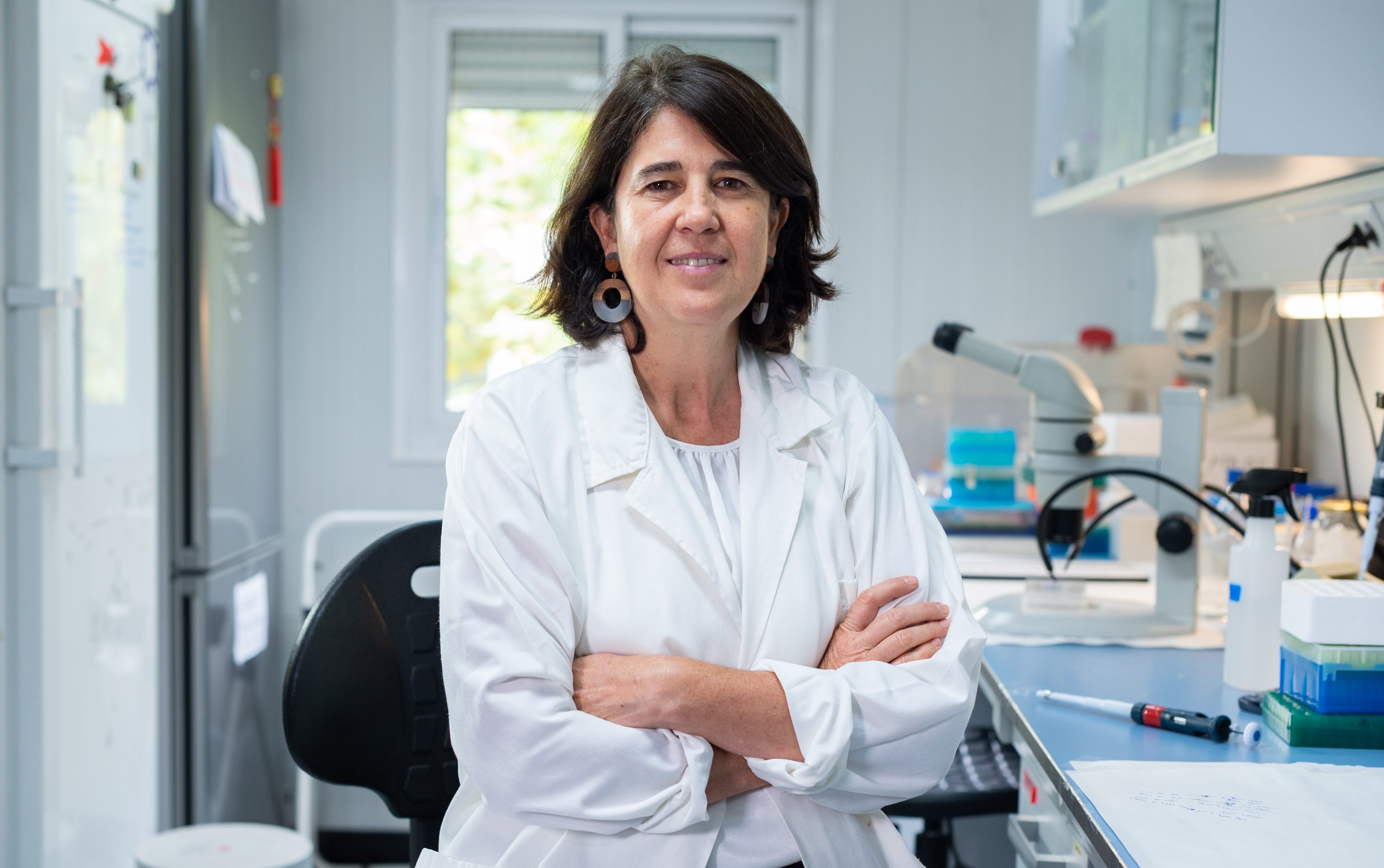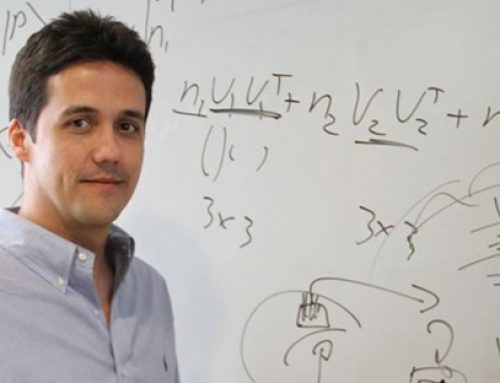- The Cajal Institute scientist investigates adult brain development and the production of new neurons.
- “We can test strategies that stop epilepsy or hyperactivity in animal models,”
- Morales will participate at the Fundación Querer’s IV Neuroscientific Conference.
Aixa Morales, a scientist and researcher, leads a work team at the Cajal Institute, a research institution affiliated with the Higher Council for Scientific Research (CSIC) committed to studying brain development and the production of new neurons in adults.
This study, like many others, begins with animal experiments. They are being tested in order to identify therapies and potentially cures for neurological diseases. Morales will speak about its usage in understanding and treating neurodevelopmental disorders during his presentation at the Querer Foundation’s IV Neuroscientific and Educational Conference on April 26 and 27.
«It is an honor to be a part of this event because of the caliber and international renown of its speakers. Furthermore, it is a fantastic opportunity to learn and talk not only with peers, but also with clinical research doctors, families, and teachers”.
You work as a scientist at the Cajal Institute in the Molecular Control of Neurogenesis group. What exactly does your research team do?
Answer: We are most interested in learning how the human brain develops during development. However, because this is a very complex issue, many scientists are studying it in animals that look like us. In mice, for example, because their brains are so similar. We utilize the mouse model not only to understand how the brain develops, but also to study the production of new neurons and their integration into brain circuits in adulthood. These new neurons were found in a very specific portion of the brain, the hippocampus, which is essential in memory and learning.
Q: How do you use these mouse models?
A: We can, for example, modify genes that are altered in certain diseases, such as neurodevelopmental disorders which can result in cognitive delays or learning difficulties. We can manipulate the genes that are altered in people in mice, then study their brains to identify which neurons and circuits are affected. likewise can also present them with a learning exercise and observe if the mice’s difficulties are similar to those seen in patients with a similar genetic irregularity.
“We can test strategies that stop epilepsy or hyperactivity in animal models”
Q: A highly complex procedure that cannot be performed directly in people….
A: No, because we can only examine non-invasive tests in humans, such as blood draws, skills tests, behavioral tests, surveys, electroencephalograms, and so on. All of these non-invasive approaches provide us with information, but only animal models allow us to see inside the brain.
Q: In your lecture, you’ll discuss animal models for understanding and treating neurodevelopmental problems. What kinds of neurodevelopmental diseases are you researching?
A: For many years, we have been working on a neurodevelopmental illness known as Lam-Schaffer syndrome. People with this condition have SOX5 gene mutations, many of which are new. This gene is significant because it regulates several stages in the formation of the cerebral cortex as well as the hippocampus. People with this condition experience cognitive delays, speech delays, and behaviors that are comparable to those seen in Autism Spectrum Disorder (ASD), such as social issues and stereotypies. Rare neurodevelopmental diseases are always complex since the brain is a complex organ that participates in many processes; also, patients in this situation have certain changes in skeletal development.
«We can test various approaches in mice to cure some of the alterations that make these individuals’ daily lives difficult.»
Q: Do you work with any other forms of neurodevelopmental disorders?
A: We’ve also begun working with Tolchin-Le Caignec syndrome since the SOX6 gene, which is connected to SOX5 and participates in comparable processes, is affected. Patients with the syndrome also have intellectual disabilities, speech delays, and hyperactivity issues, making behavior and classroom integration problematic. There are currently very few individuals diagnosed with this condition because the first study that defined it was published in 2020, but we are trying to shed light and understand what may be altered because we have experience in animal models of loss of both genes.
Q: What will this research lead to in the future?
A: First and foremost, recognizing where the reason is and why there are these changes is critical for a diagnosis; the earlier we intervene, the greater the window of plasticity in the brain. We can also direct behavioral therapy that can be applied to that child in a specific area even before symptoms develop. hopefully in the future, we may be able to prepare and implant specific neurons from the patient’s cells in very particular territories, allowing us to boost plasticity and the person’s potential to recover certain abilities. Alternatively, and without being as intrusive, stimulate neurons with particular medications that promote the production of new neurons.
Q: Could therapies being investigated for the rare Lam-Schaffer or Tolchin-Le Caignec diseases be applied to other neurodevelopmental disorders that do not share the same gene?
A: Yes, the mice models will let us test therapies and approaches that may be applicable to many other neurodevelopmental diseases where the mutation is in a different gene but the damaged circuit and area of the brain is similar. Everything learned about how to apply a therapy to a rare neurodevelopmental disorder can undoubtedly be applied to other diseases by altering the specificity of the gene or the region of the brain where long-term intervention can be undertaken.
Q: Can animal models help us uncover not only treatments but also cures for certain diseases?
A: Yes, if you reproduce an illness in an animal that is very close to what you find in humans, you can test these animals directly. We can test various tactics on them to prevent epilepsy or hyperactivity, for example. This will not heal the full condition, but it will alleviate some of the symptoms that make these patients’ lives tough. We would ideally like their learning and communication abilities to increase as well, but we don’t know much about how the brain circuits that regulate this work, neither in humans nor in mice.
«We may be able to delay and improve the memory of Alzheimer’s patients»
Q: Although research into neurodevelopmental disorders is growing at a rapid pace, many of them remain incurable. What is needed to make more progress in research?
A: You must act on multiple levels. On the one hand, fundamental research is required to understand how the process works and to discover novel drugs that works. However, it is critical to promote financing. In this regard, Spain falls substantially behind the European average, making it difficult to have an impact on the Spanish pharmaceutical industry. In the end, the country loses this wealth of knowledge and medicine production. There, scientific dissemination, the media, and persuading society of the necessity of research are critical so that, when budgets are chosen and votes are cast, society is committed to research. Furthermore, we must continue to promote the link between basic and clinical research domains.
Q: Your Cajal Institute team has discovered a way to stimulate stem cells in the adult brain of a mouse. I mentioned this discovery at the start of this conversation; what exactly have you discovered?
A: We have seen how the majority of neural stem cells, which are cells that remain dormant throughout the mouse’s life, are blocked and only a small number of them are activated and generate new neurons necessary for memory operations. The SOX5 gene is one of the genes that activates these cells, so when we remove it, the cells remain dormant and no new ones form. When this gene is activated, however, it is capable of producing more of these new neurons.
Q: How might this discovery enhance the lives of persons suffering from neurodevelopmental disorders?
A: The incorporation of new neurons has a dual applicability in human disorders. On the one hand, if we have an early diagnosis of a neurodevelopmental alteration and additional technologies that have yet to be developed, we may be able to boost the ability for new neurons to grow when they have formed less than necessary or have been left behind throughout development in an inappropriate location, therefore you must compensate by training more. When we refer about neurodevelopmental disorders, we mean those that affect brain formation, such as ASD, ADHD, schizophrenia, bipolar disorder, and uncommon diseases that produce cognitive deficiencies.
In neurodegenerative disorders such as Alzheimer’s, however, it is the neurons in the hippocampus that are lost first, which is why one of the first signs is loss of short-term memory, which is controlled by the hippocampus. If we could promote the formation of more of these neurons, we would be able to, at the very least, delay and improve the memory of these patients, and thus their ability to continue learning or remembering, fundamental tasks in their daily lives, would improve. However, we need more time before we can put this to use.
«Society must recognize the importance of animal studies, particularly from the standpoint of neuroscience.»
Q: How long may it take from the beginning of animal model investigations to therapeutic applicability in humans?
A: For many years, but you never know: diseases of the blood system are suddenly being treated thanks to genetic editing in 5-6 years, while we believed it would take 20-30. However, any blood condition is more easier to treat than a brain sickness since blood can be changed, whereas we cannot replace all neurons or modify the brain. In certain cases, I worry it will take decades. In any case, it is one thing to totally cure this disease and quite another to alleviate some of its symptoms, such as hyperactivity or epilepsy; this will be resolved sooner.
Q: Animal testing is sometimes fraught with controversy. In fact, there is a European citizens’ initiative to put an end to animal testing in the EU. What are your thoughts about that?
A: Respect for animal health is fundamental, and the first to embrace this cause are the scientists who work with them. However, on many occasions, the message given is very simplistic, animals are made untouchable, forgetting that, aside from serving as a source of food for us, they also serve in research. All medical discoveries that we can think of have been tested on animals first, with the most recent paradigmatic example being the invention of the COVID vaccine. So, the simplicity of the statement “we are going to protect animals and not use them in research” is a moral aberration since it contradicts human ethics: attempting to cure all conceivable diseases in humans and animals. It is a critical issue that society recognizes the importance of animal research, particularly in the field of neurology. If we want to heal people, we need animals.






















